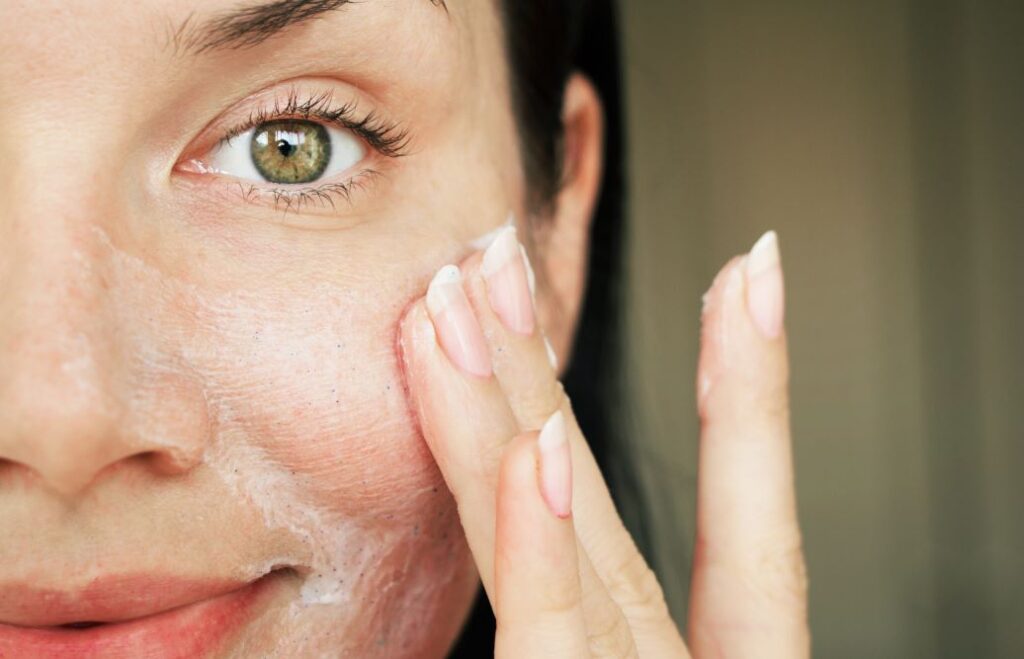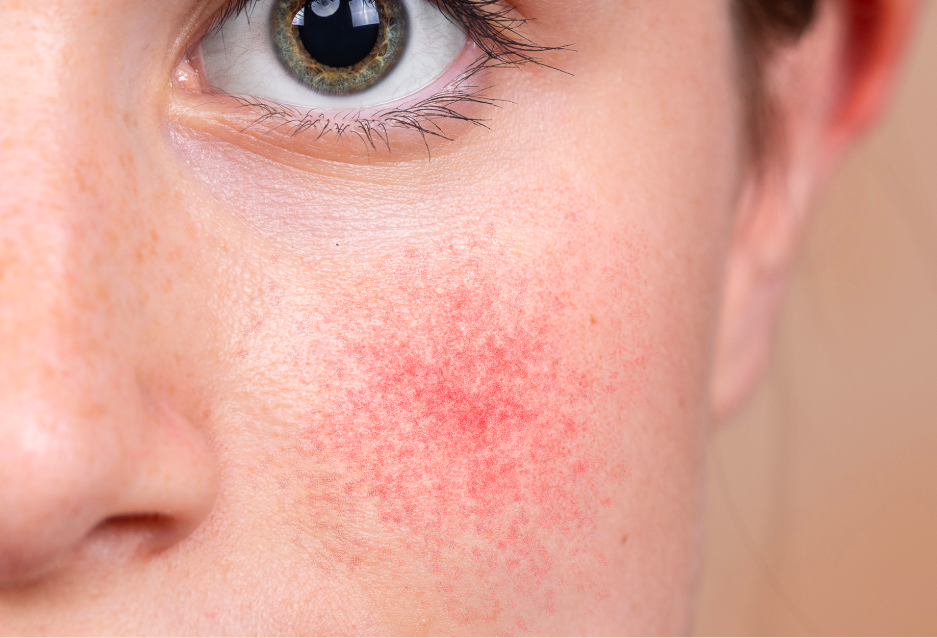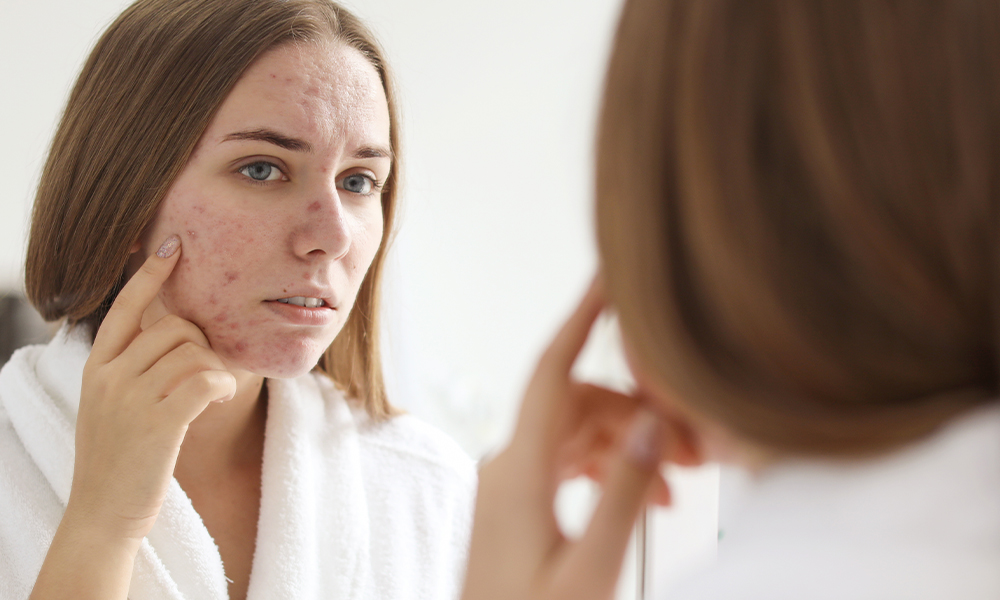What Are Antioxidants In Skincare?

Link to share article here:
The Science Of Your Skin
There’s nothing quite like the daily skincare ritual. Cleanse, treat, hydrate and protect – day in, day out. Not only does it feel good, and add to that all-important selfcare regime, but there’s a whole litany of microscopic science going on – biology, chemistry all on the surface of your skin, barely visible to the naked eye.
Today on The Dose, we’re examining the science of your skin – how your skincare works, and how it interacts with the different parts of your skin to work its magic.
What is skin?
Skin is your body’s largest organ – soft, flexible and covers your entire body (around 20 square feet!). Its main job is to keep the good stuff in, the bad stuff out. It protects us from the elements and comes in all tones and textures. Looking after it is something humans have done throughout history. And as we continue to modernise how we do that, here’s a little bit of science to make things easier.
The layers of your skin
There are three distinct layers of tissue that make up the skin: the top layer (epidermis), the middle layer (dermis) and the bottom layer (hypodermis). The epidermis is our first line of defence for our bodies, keeping out harmful bacteria and pollutants, and giving us all-round protection. It gives skin its colour, and regenerates our skin cells – did you know that we have new skin every 30 days?
The dermis is the thickest layer – it holds collagen, for strength and support, and elastin, for flexibility. Both are what help your skin retain its shape, and help it bounce back when stretched. It also holds your nerve receptors, sweat and oil glands, and blood vessels.
The hypodermis is the fatty layer of skin, helping to regulate your body temperature and cushion your bones and muscles. When it comes to skincare, the epidermis and dermis are the most important parts to consider.
How does skincare work on skin?
Of all the skincare products on the market, the vast majority won’t get to the dermis. That’s not to say they don’t work, but they are designed to work on the top layer of your skin. It’s also worth noting that your skin is waterproof – so if you can feel your skincare ‘sinking in’ to your skin, it’s actually just drying in real time.
So, how does a hyaluronic acid serum or BHA exfoliant actually work on your skin? Head of Medical, Dr Jason Thomson explains, “chemical exfoliants function to break the bonds that hold together the dead skin cells on the outermost layer of the epidermis, encouraging them to shed, leaving the brighter, regenerated skin underneath.”
While these ingredients use a chemical process to sweep away dead and dying cells, retinoids, conversely work differently. “Retinoids don’t break these bonds between the dead skin cells. They do have an exfoliant effect however through their ability to increase skin cell turnover which effectively does have the same endpoint as they increase new skin formation and the shedding of dead skin cells.”
By encouraging skin cell turnover, cells die faster, leaving behind new skin. Similarly, retinoids such as tretinoin, can penetrate the dermis, as they boost the production of collagen – we often refer to it as the ‘scaffolding’ of the skin. That’s on the plus side, but skin cell turn over can also cause skin purging – a sudden increase in spots from using powerful active ingredients.
“Tretinoin works in the epidermis, stimulating cell renewal and enhancing the cell layer, reducing pigmentation and normalising sun-damaged cells. It also works in the dermis to increase collagen and elastin which thicken the dermal layer and make the skin appear plump.”
DR JASON THOMSON
What other parts of the skin are affected by skincare?
We know our skin contains hair follicles, sweat and oil glands and pores. These are all affected by what comes into contact with your skin, so it’s important to know how these work in order to ensure your skincare works optimally.
Hair follicles
Time for some hair-raising science! Hair follicles are a pocket of your skin that allows hair to grow, found in the epidermis. They determine what your hair looks like in terms of colour and texture, and can be affected by issues such as alopecia (hair loss) and folliculitis (inflammation or infection of hair follicles).
Exfoliants such as glycolic acid or a physical scrub can clear dead skin cells from hair follicles, and prevent ingrown hairs – particularly when shaving or waxing.
Glands
Don’t sweat the small stuff, let’s talk about glands. There are different kinds of glands all over your body, all for different purposes. Here, we’re focusing primarily on oil and sweat glands.
Oil glands (aka sebaceous glands) are what make your skin oily, as they produce sebum. They regulate your body temperature (along with your sweat glands), keep your skin hydrated and help protect your skin from infection.
When your skin produces too much sebum, giving the skin a greasy, shiny appearance, and causing breakouts, exfoliating acids and retinoids should be your go-to. As above, exfoliants clear dead skin from your pores and hair follicles, preventing clogging and the resulting breakouts.
Areas with less oil glands are more prone to sensitivity as a result. Consultant Dermatologist, Dr Malvina Cunningham adds “The skin around your eyes is the thinnest skin on the body and has fewer oil-producing glands. This means it’s prone to puffing, dark circles, wrinkles and dryness and is often the area where we see the first signs of ageing.”
Sweat glands do what they say – they produce sweat. Helping you cool down on hot days, stuffy tube carriages and during your weekly spin class, sweating is a normal and natural body process. But as you’re secreting stuff your body doesn’t need, it’s important to maintain good hygiene – sweat contributes to daily buildup which can lead to breakouts and skin irritation.
Pores
We hear a lot about them, but what are pores? Dr Malvina Cunningham explains, “Pores are the small openings where hair follicles and oil-producing glands open onto the skin surface. They’re a natural part of our skin structure, keeping skin healthy.”
“Pore size is determined by age and genetics – however you feel about them, you can’t get rid of them. The good news is that you can make them less visible.”
DR MALVINA CUNNINGHAM
You can’t change the size of your pores or ‘tighten them’, but if they appear larger as a result of acne, overproduction of sebum or sun damage, there are ways to minimise their appearance.
AHAs (eg. glycolic acid) or BHAs (eg. salicylic acid), when used occasionally, can dry out your pores more effectively. Make sure you’re sticking to non-comedogenic skincare and makeup too, as these won’t make your skin oilier than other oil-based products.
Dr Jason Thomson reminds us “using too much greasy, occlusive cosmetics can result in blocking pores which can lead to acne breakouts.” Above all, sticking to a simple, effective routine is the best thing you can do.
The takeaway
Understanding how our skincare actually works goes a long way in helping us make the right choices. It’s easy enough to buy something because it “gives you a glow” or “stops breakouts”, but knowing how the ingredients actually do that makes a skincare fanatic into a well-informed consumer. Investing in your skincare is important, but only if you know what it’s doing.
You might also like…
For more on how active ingredients work on your skin, check out our Ingredient Deep Dives. If you’re interested in the skin on the rest of your body, our piece on Bodycare has everything you need.
New to Skin + Me? Get your first month of personalised skincare for £4.99 with promo code DOSE – complete our quick consultation here.
Looking for a routine refresh? Add the Dream Routine to your Skin + Me subscription.
In need of a restock? Head to The Skincare Shop for one-off purchases of your Routine Essentials.



